前言
在做列表的时候,会经常遇到最后一个元素与其他元素在样式上会有差异的情况。
如果是单纯的静态页面,可以使用class去控制。也可以在页面渲染结束之后,使用js去控制。若对于兼容性的要求并非那么严格,可以使用css去控制。个人建议使用css控制。
然而,就在这种情况下,我遇到了一个问题,就是:last-child与:last-of-type经常搞混,不知什么情况下使用哪个。
为了解决这个一直困扰我的问题,我查了一下CSS手册。
:last-child
关于:last-child手册中是这么解释的:
The:last-childCSS pseudo-class represents the last element among a group of sibling elements.
CSS伪类:last-child代表在一群兄弟元素中的最后一个元素。
举个栗子:
<!DOCTYPE html>
<html>
<head>
<meta charset="utf-8">
<title></title>
<style type="text/css">
li {
border-bottom: 1px solid #AAAAAA;
}
li:last-child {
border-bottom-color: #F00;
}
</style>
</head>
<body>
<ul>
<li>我是第1个li元素的内容</li>
<li>我是第2个li元素的内容</li>
<li>我是第3个li元素的内容</li>
<li>我是最后一个li元素的内容</li>
</ul>
</body>
</html>从代码和图可以看出:last-child选择了最后一个li标签。
同时,我们换另外一段代码,看看是否还有这样的效果。
<!DOCTYPE html>
<html>
<head>
<meta charset="utf-8">
<title></title>
<style type="text/css">
p {
border-bottom: 1px solid #AAAAAA;
}
p:last-child {
border-bottom-color: #F00;
}
</style>
</head>
<body>
<p>我是第1个p元素的内容</p>
<p>我是第2个p元素的内容</p>
<p>我是第3个p元素的内容</p>
<p>我是最后一个p元素的内容</p>
<div>我是个干扰元素</div>
</body>
</html>从代码和图可以看出,:last-child并没有起到我们想要的作用。如果,这个时候去掉最后的div标签,再看看效果。
这时,效果出来了,那么,可以总结了。
:last-child表示其父元素的最后一个子元素,且这个元素是CSS指定的元素,才可以生效。:last-of-type
关于:last-of-type手册中是这么解释的:
The:last-of-typeCSS pseudo-class represents the last element of its type among a group of sibling elements.
CSS伪类:last-of-type代表在一群兄弟元素中的最后一个指定类型的元素。
直接用上面两个栗子。
<!DOCTYPE html>
<html>
<head>
<meta charset="utf-8">
<title></title>
<style type="text/css">
p {
border-bottom: 1px solid #AAAAAA;
}
p:last-of-type {
border-bottom-color: #F00;
}
</style>
</head>
<body>
<p>我是第1个p元素的内容</p>
<p>我是第2个p元素的内容</p>
<p>我是第3个p元素的内容</p>
<p>我是最后一个p元素的内容</p>
</body>
</html>没有干扰元素,OK。
<!DOCTYPE html>
<html>
<head>
<meta charset="utf-8">
<title></title>
<style type="text/css">
p {
border-bottom: 1px solid #AAAAAA;
}
p:last-of-type {
border-bottom-color: #F00;
}
</style>
</head>
<body>
<p>我是第1个p元素的内容</p>
<p>我是第2个p元素的内容</p>
<p>我是第3个p元素的内容</p>
<p>我是最后一个p元素的内容</p>
<div>我是干扰元素</div>
</body>
</html>有干扰元素,OK。
:last-of-type表示其父元素下的最后一个指定类型的元素结尾
总结了一番,对于什么场景下使用:last-child和:last-of-type又了相应的认识,以后犯错的可能性就会降低了很多。
-- EOF --
本文转载自IMJCW
原文链接::last-child与:last-of-type的区别
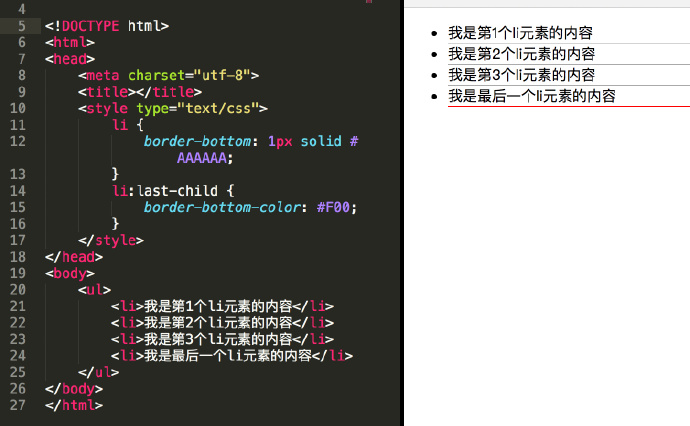
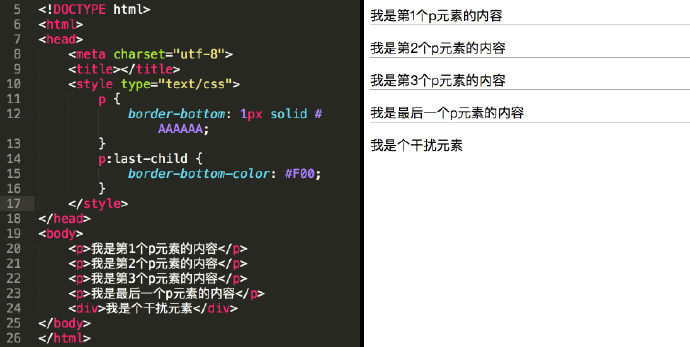
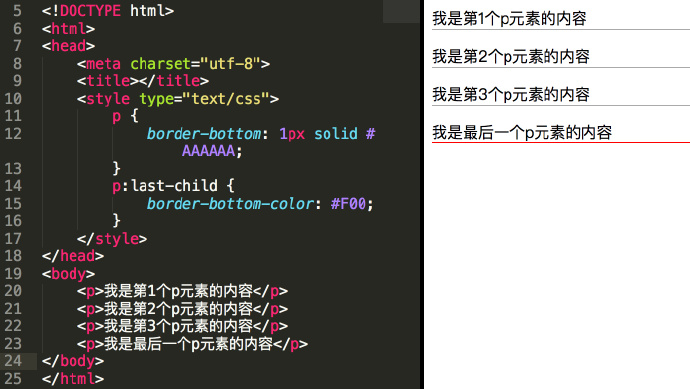
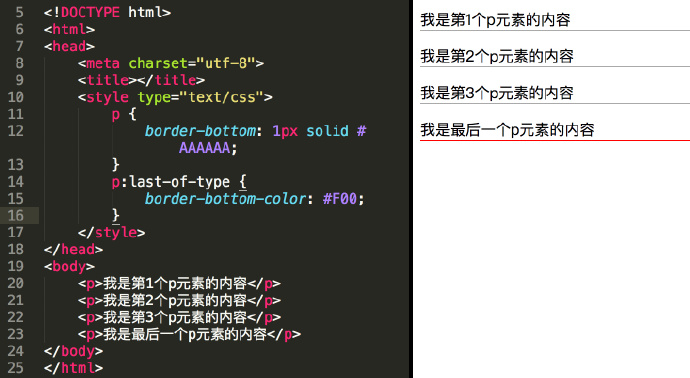
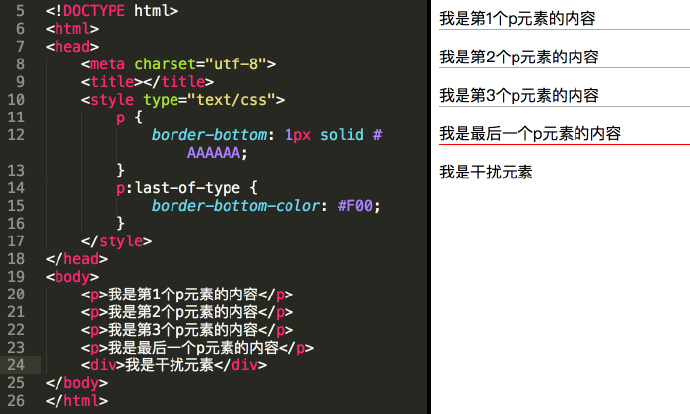
1 条评论